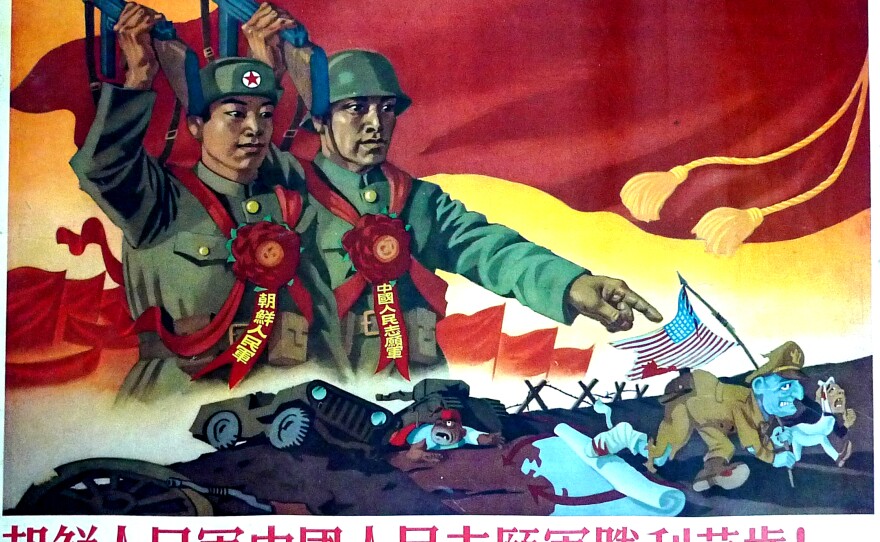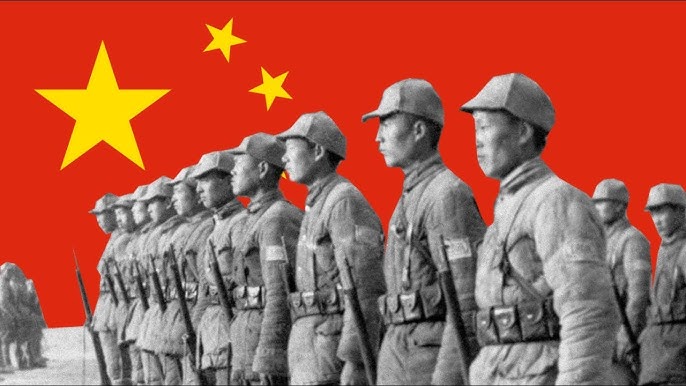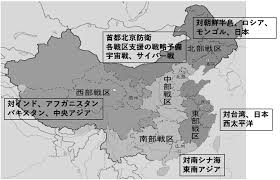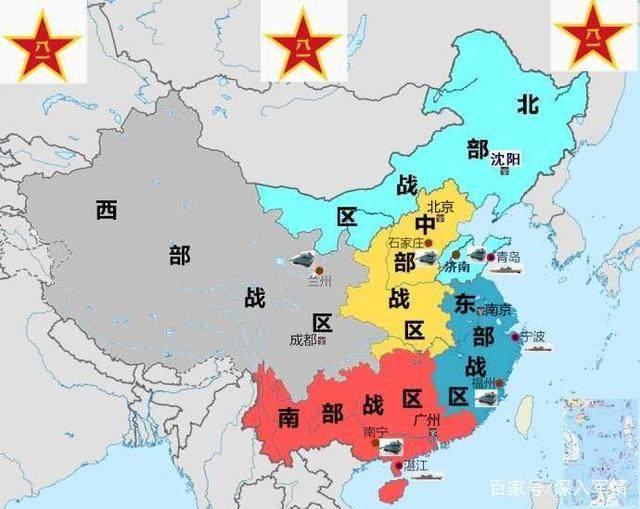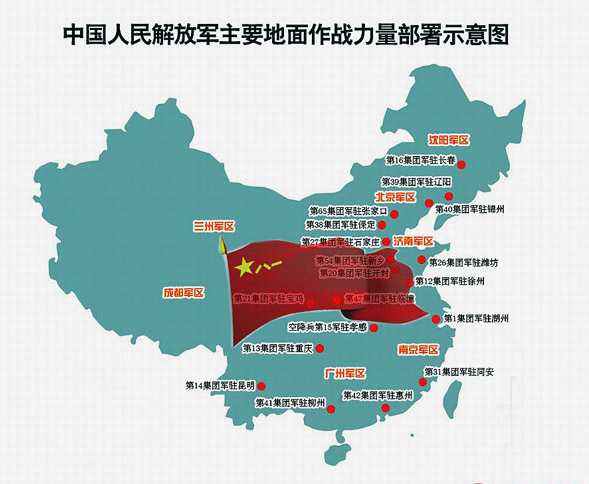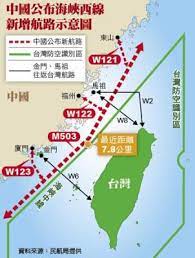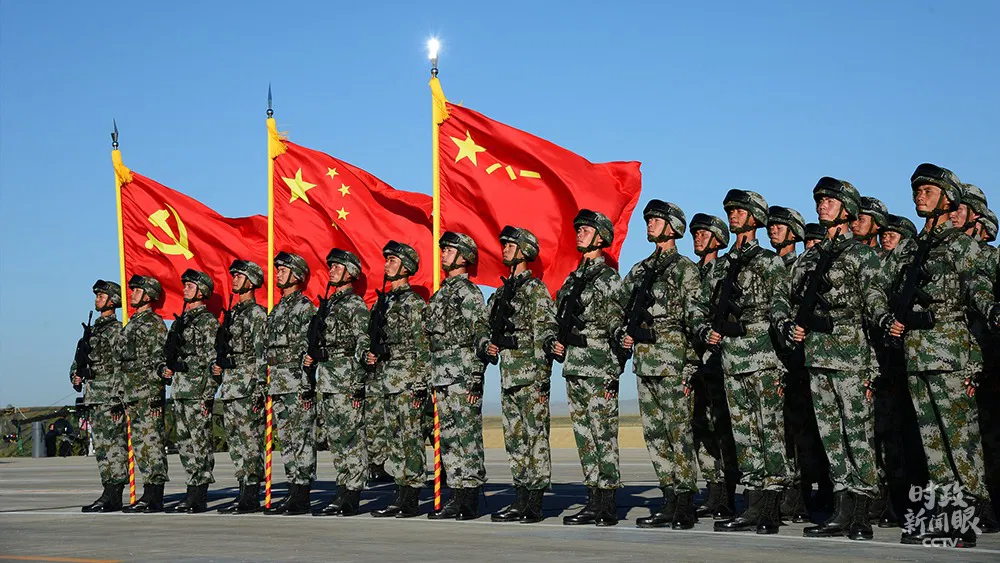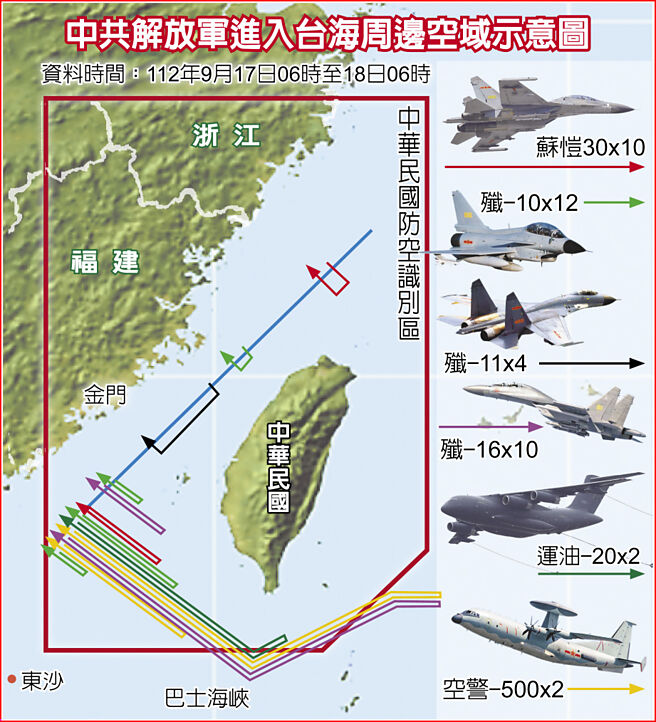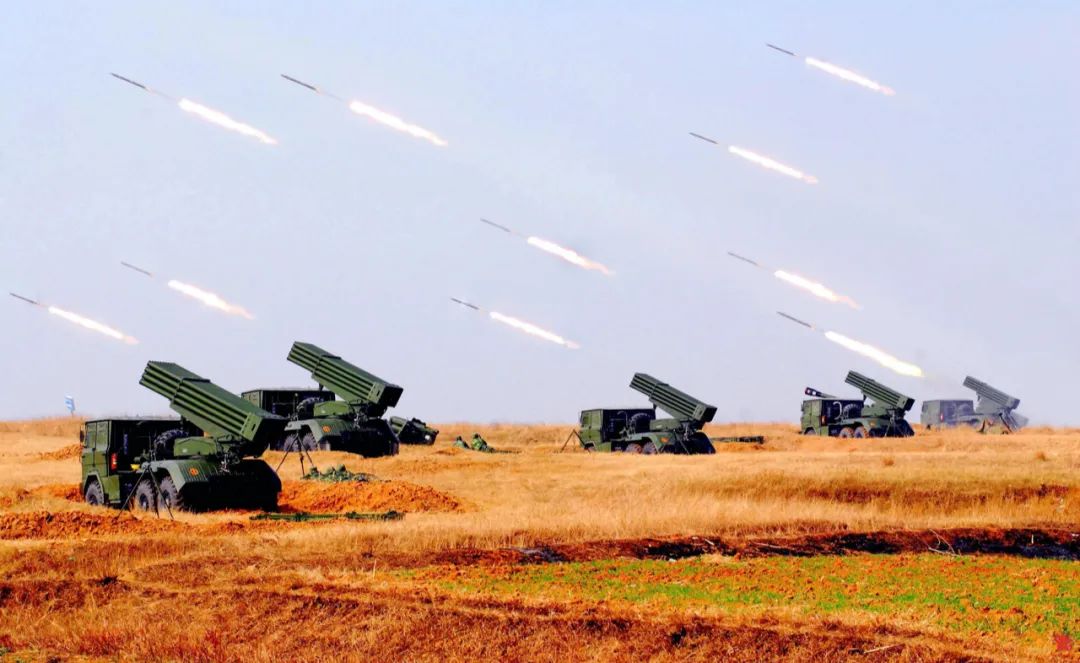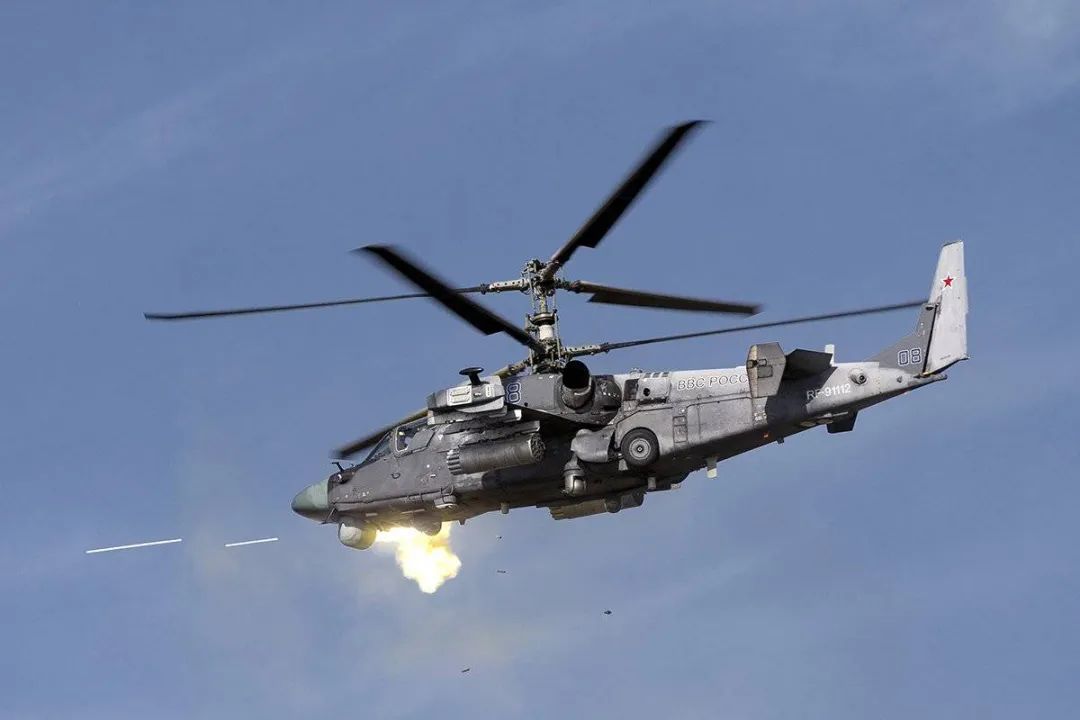中國人民解放軍內部實施《聯合合作綱要》
現代英語:
With the approval of Xi Jinping, Chairman of the Central Military Commission, the Central Military Commission issued the “Outline of Joint Cooperation between the People’s Liberation Army of China (Trial Implementation)”, which will come into effect on November 7, 2020.
The Outline focuses on building a legal system for joint operations and strengthening the clear orientation of preparing for war. It is of great significance to consolidate and deepen the results of the reform of the leadership and command system, scale structure and force composition, and to promote the liberation and development of our military’s joint operations capabilities.
The Outline is the top-level regulation of our military’s new-era combat doctrine system. It focuses on clarifying the basic issues of joint combat organization and implementation, unifying combat thinking, clarifying responsibilities and procedures, and guiding combat operations. It also clarifies major principles, requirements, and basic procedures for joint combat command, combat operations, combat support, national defense mobilization, and political work.
The Central Military Commission requires that all levels should earnestly study and implement the “Outline”, adhere to combat effectiveness as the only fundamental standard, use the “Outline” as the basic basis for organizing and implementing joint operations and joint training, and comprehensively improve the ability to win in the new era.
The battle flag hunt, the military parade ground was full of ups and downs, and the climaxes continued——
From north to south, the surging iron torrents train elite soldiers; in the deep blue ocean, soldiers step on the waves to forge sharp swords; above the vast sky, eagles fly thousands of miles towards the blue sky; deep in the dense forests, the east wind roars to the sky; the skynet controls power, and the invisible war defeats the visible… One after another joint combat exercises are gradually unfolding in multiple domains and all dimensions, presenting a picture of a strong army that trains together to plan for war, uses training to promote war, and wins war through strong training, sounding the strong note of a new era in the history of our army’s training and preparation.
Over the past year, the world has been undergoing unprecedented changes unseen in a century, intertwined with the global COVID-19 pandemic. Under the sky shrouded by the epidemic, the international situation has been in constant turmoil and confrontation. The drone warfare that has shined in the Nagorno-Karabakh conflict has shown the world the unique characteristics of modern warfare.
“When times change, things change. When things change, we must be prepared for change.” In the future, “what kind of war to fight and how to fight it” carries the heavy mission, and the entire military is surging with enthusiasm for researching and winning wars.
Faced with new changes in the national security situation, new threats from powerful enemies and adversaries, and new developments in the form of warfare, we urgently need to provide answers to strengthening the military, winning battles, and meeting the needs of the times.
“Overall, modern warfare has indeed undergone profound changes. These changes may seem dazzling, but there are regularities behind them. The fundamental thing is that the winning mechanism of war has changed.” Faced with the rapid development of the new world military revolution and changes in the war situation, under the guidance of the commander-in-chief and in accordance with the unified deployment of the CMC’s policy and system reforms, the CMC Joint Staff Department organized experts from the Academy of Military Sciences and capable personnel from relevant departments of the CMC, various theater commands, various military services and armed police forces to form a joint research group to pool wisdom and strength to tackle key problems and advance the formulation of new-era combat regulations.
On November 7, 2020, the “Outline of the Joint Cooperation Warfare of the People’s Liberation Army of China (Trial Implementation)” was implemented throughout the army, marking a new coordinate system for our army’s joint cooperation war in the new era.
Since the issuance of the Outline, commanders have taken the lead in learning it, agencies have taken the lead in studying it, and troops have practiced learning it. The officers and soldiers of the whole army have been enthusiastic about learning and publicizing the Outline. A great discussion on joint operations in the new era, a great liberation of thoughts, and a great practice of preparation for war have been vigorously carried out in the whole army.
Pointing to victory, leading the new practice of preparing for war in the new era
“Following the main road, who would you follow to seek a shortcut?” In the world of soldiers, there is no such thing as “easy”. The only way to win a battle is to be prepared.
What kind of war we will fight in the future will require innovative tactics; if we cannot innovate tactics, it will be difficult to win future wars.
In essence, combat regulations are about solving the problem of how to fight and how to win, and are the refinement, deepening and concretization of military strategic policies. The Outline of Joint Cooperation of the People’s Liberation Army of China (Trial) (hereinafter referred to as the Outline) deeply studies the characteristics and laws of future wars, accurately grasps the era characteristics of the integrated development of mechanization, informatization and intelligentization of our army, and through the forward-looking and concrete design of future operations, implements the spiritual essence and content requirements of the new era’s military strategic policy into the troops’ preparation for war.
The Outline is not only a guideline for preparing for war, but also a guideline for winning joint operations.
At the beginning of the new year of 2021, a certain area of the Eastern Theater Command is organizing a multi-service, multi-directional, systematic combat training. Under the guidance of the newly issued “Outline”, this exercise involves the full-domain linkage of land, sea, air, space, network and electric power, close coordination of political and public opinion, and information-led throughout the entire process from combat preparation to situation shaping to mission implementation. All units work closely together, demonstrating the firm determination and strong ability to maintain national unity with a thunderous momentum, and also witnessing the transformation of our military joint cooperation from “formal linkage” to “spiritual linkage”.
In the west, at midnight in mid-spring 2021, a series of urgent alarm bells rang. According to the level transfer order of a certain base of the Western Theater Air Force, the officers and soldiers of a certain air defense battalion of the Army quickly rushed to their positions, and the level transfer time was further shortened. According to the unified deployment, more than 10 Army air defense forces in the theater air force responsibility area entered the Air Force command chain in an organized manner, breaking the information barrier of the services, sharing early warning information, and jointly taking on combat readiness duty, and initially forming a joint air defense combat system. “You lend me the ‘eye in the sky’, and I will help you with the ‘iron fist'”, the integrated joint air defense combat across the services has taken a new step and entered a new stage.
In the north, at the beginning of the summer of 2021, war eagles soared and iron currents rolled, and an exercise with the theme of air-ground joint operations was in full swing. According to the plan, a certain command post of the Air Force of the Northern Theater Command and a certain group army of the Army jointly organized a brigade-level command post exercise to study and explore the composition of joint command institutions and test the integrated joint combat command capabilities of the command post personnel. Intelligence analysis and processing, joint firepower strikes, and integrated rear-end support were coordinated and planned and carried out in an integrated manner, and the command institutions were organized in an integrated manner with all elements. Through repeated joint combat and training, the policy of leading training through combat and carrying out combat through training has been further implemented, and the joint combat and command capabilities of commanders of all services and arms have been significantly improved.
In the direction of the South China Sea, war eagles roared and attacked fiercely, dragons took off and stepped on the sea and waves, radars flew and missiles raised their heads… Under the unified command of the theater joint command, all mission forces worked as a whole and coordinated closely to quickly build a battlefield layout that was multi-domain joint, both offensive and defensive, and deployed in echelons. They adopted a combination of centralized command and decentralized command, and flexibly carried out sea and air escort and deterrence and expulsion in a reasonable, forceful and restrained manner, effectively maintaining peace and tranquility in the South China Sea.
In the past year since the implementation of the Outline, the orientation of preparing for war has become clearer and firmer, the sole fundamental standard of combat effectiveness has been more firmly established, training and preparation for war as the main responsibility of the troops has become more prominent, researching and planning war as the primary responsibility of officers and soldiers has become clearer, the ideas and measures for joint operations and victory have become increasingly effective, and the entire army has continued to set off a new upsurge in training and preparation for war.
Keep pace with the times and clarify the new mechanism of joint cooperation in the new era
“All beneficial ways go with the times.”
Military theorist Douhet once said: “Victory smiles only on those who can foresee the changes in the character of war, not on those who wait for the changes to happen and then adapt to them.”
Looking around the world, the game and struggle among major powers are intensifying, the threat of war exists, the war situation continues to evolve, new military reforms are booming, stealth, unmanned and intelligent weapons and equipment have become the mainstream trend, the battlefield space has expanded to all domains and dimensions, the integrated linkage of combat forces has become the norm, combat command, action and support have become more sophisticated, and winning future wars requires the support of more advanced combat theories.
The gap in combat concepts is the fundamental gap, and the backwardness of combat theory is the biggest backwardness. When modern wars are surging in the world, what is most needed is newer and braver minds.
The new-era combat regulations, led by the Outline, adhere to Xi Jinping’s military strategic thinking and the new-era military strategic policy as the soul and outline, deeply grasp the new changes in national security, new adjustments in combat opponents, new designs in strategic layout, new connotations of active defense, and new developments in combat guidance, and materialize the principles and methods of commanders’ understanding and guidance of war into norms and standards for the specific implementation of the troops, so as to promote our military-joint cooperation war to a higher level.
——It comprehensively expounds the contemporary connotation of war guidance under information conditions.
The Outline aims to win future high-end wars, accurately grasps the characteristics of lowered thresholds for future armed conflicts, blurred boundaries of war, and increasingly prominent mutual influence and efficiency between the war field and other fields, strengthens the political and social attributes of combat operations, innovatively develops military struggle paradigms, emphasizes relying on the country’s integrated strategic system and capabilities, emphasizes the integration of war and non-war domains, emphasizes the comprehensive implementation of military and political, diplomatic, economic, cultural and other means, and gives full play to the overall advantages of the party, government, military, police and people. It reflects the modern war concept and the war guidance for winning the people’s war and total war in the new era.
——All elements standardize the style and methods of our joint military operations.
The Outline is based on the tasks and development of our army, and systematically expounds on the possible joint operations in the future, covering the core missions of various strategic directions, covering land, sea, air, space, network and electromagnetic multi-dimensional space. At the same time, it also creatively summarizes the basic types of joint operations, highlights the basic actions that run through the joint operations and have common characteristics, and forms a closed-loop chain of joint operations with all elements and in all fields.
——The joint combat command system and organizational operation mode were designed throughout the entire process.
The implementation of joint operations organizations is extremely complex and difficult. Whether they can be “coordinated” in terms of strength, “joined” in operations, and “excellent” in effectiveness depends crucially on whether they can achieve “unification” in command. The “Outline” focuses on building a strong and efficient joint operations command structure, closely integrates the Central Military Commission and the theater joint command operation model mechanism, fully considers that it not only complies with the general direction and general requirements of the reform, but also leaves room for flexible formation in practice. It focuses on solving major issues such as the construction of a joint operations command system, the differentiation of command authority and responsibility interfaces, and the integration of services into the joint system, so as to ensure that thousands of troops and horses can jointly act under unified orders.
Taking joint training as the guideline, promoting a new leap forward in joint training in the new era
At the Central Military Commission’s military training conference, President Xi Jinping stressed the need to strengthen joint training, adhere to joint training as the key, develop a joint training system with Chinese characteristics, and accelerate the improvement of integrated joint combat capabilities. Soldiers should be trained in the way they fight, and troops should be trained in what is needed for fighting. Today’s world-class armies all regard improving joint training as the top priority for war preparation.
The Outline is the opening chapter of the new era combat doctrine and the guiding principle for the transformation of joint training in the new era. The Outline provides direction, inspires vitality, and gives birth to a new pattern of joint training in the new era.
——Incorporate combat into training to present an “integrated posture” of training.
In the Taiwan Strait, the naval and air fleets carried out joint combat readiness patrols to test and enhance the joint combat capabilities of multiple services, maintain a high state of alert at all times, and resolutely defend national sovereignty and territorial integrity. Exercise preparation is combat preparation, and the exercise state is the combat state. Joint military exercises are no longer simple training activities, but have become a preparation process to promote combat readiness and enhance capabilities. Joint training, the “source” and “main stream” full of power, is guiding and driving the in-depth advancement and vigorous development of military struggle preparations, and fully unleashing the role and effectiveness of training to carry out combat and training to promote preparations.
——Systematic training has become the “new normal” of joint training.
“East”, “South”, “West”, “North”, and “Central” are joint live-fire exercises organized by various theater commands, “Crossing”, “Mobility”, “Red Sword”, “Sky Sword”, and “Joint Logistics Mission” are series of systematic exercises organized by various services, covering all seasons, all weather, and all regions. The CMC, theater commands, and services are responsible for division of labor, overall design, and systematic organization. They are decomposed from top to bottom and integrated from bottom to top, driving the operation and inspection of the joint combat system. Joint exercises and systematic training present a new look, and new changes have taken place in the training and preparation mode. Our military’s joint training has entered a new stage of all-round transformation and overall improvement.
——Joint training between China and foreign countries highlights the “integration” of joint exercises.
At the foot of the Helan Mountains and in the heart of the Bronze Gorge Desert, the “Western Joint-2021” China-Russia joint exercise was booming. In this joint exercise, the Chinese and Russian militaries were mixed and planned together. The two sides shared their positions, coordinated closely, and acted together. They practiced more than 20 subjects such as joint air defense, joint obstacle removal, and joint three-dimensional seizure. With the support of the deeply integrated combat system between China and Russia, new breakthroughs in joint exercises and training were achieved. “Maritime Joint”, “Common Destiny”, “Peace Mission”… With the joint training between China and foreign countries as a “window”, the new changes in the joint training of the Chinese military are being brilliantly presented to the world.
——Intensive training in new domains, demonstrating an “open attitude” in research and warfare.
In joint exercises, underwater unmanned “fish schools”, land unmanned “wolf packs”, and air unmanned “bee swarms” began to emerge. New domains and new types of forces such as land aviation, special operations, electric power, unmanned, network, and aerospace were deeply integrated into the joint combat system and the joint exercise process, and realistic combat scenarios were carefully constructed to accurately experiment with modern war organization and management. As the most active practice area for preparing for war, joint training, with an innovative and open attitude, boldly tried and made great strides towards the new combat areas pointed out in the Outline.
Integrating war and construction to shape a new pattern of system construction in the new era
President Xi stressed that we must adhere to the principle of building the country in accordance with war, strengthen the coordination of war and construction, speed up the promotion of major strategic, leading and fundamental projects, and accelerate the creation of a high-level strategic deterrence and joint combat system.
If the “trouble” in the construction of the joint combat system is not resolved quickly, once the “interest” of the debt accumulates, it will become a “pain” on the battlefield tomorrow. From the perspective of war, the “Outline” calibrates the “sight” of construction and firmly points to the correct direction of military construction.
——Calibrate the construction “sight” to point to the needs of joint operations.
Under the guidance of the Outline, the concept of jointness has been gradually established, and the barriers of “coordination” of military operations and “integration” of combat domain capabilities have been gradually broken down. The land, sea, air, and fire arms have been combined in the same domain, and cross-domain integration of combat domains such as space, network, and electromagnetic space has gradually become a reality. With the support of the network information system and combat data information as the link, a full-time and smooth command link has been built. The system is internally connected to each combat sub-center, and is connected to each combat group (team) command post. When necessary, it can directly reach the end of the individual platform to achieve joint command to the end. All operational forces worked together around the overall intention, realizing the transformation of the joint combat concept from focusing on the “service attributes” of combat forces to focusing on the “operational domain”, which has become the main feature of future joint combat. Studying, planning, and training for war with the “Outline” has become a trend throughout the military.
——Calibrate construction’s “sights” to point to system shortcomings and weaknesses.
Based on the Outline, our army insists on combining inheritance and innovation, theory and practice, innovatively designs strategies for winning future wars, focuses on highlighting problem orientation, takes root in training and preparation for war, promotes the construction of joint combat command system and new combat force construction, and effectively solves the outstanding shortcomings and weaknesses in military combat preparation. In mid-May 2021, the Party Committee of the Northern Theater Command held a special war meeting, and in accordance with the Outline, thoroughly identified contradictions and problems in joint combat research, command and control mode transformation, joint handling level, and efficient command capabilities. According to the Outline, it optimized system support, improved command and control methods, and improved command means, which promoted the transformation of the operation mode of the theater joint command center and the improvement of command effectiveness. Looking across the entire military, similar practices are becoming more and more common. Referring to the Outline to find gaps, ideas, and methods in the near and long term has become the new mainstream for planning and promoting construction at all levels and in all fields.
——Calibrate the construction “sight” to point to the urgent need to balance powerful enemies.
To implement the principle of building the military in accordance with war and coordinating the military construction, we must not only focus on solving current practical problems, but also pay attention to solving long-term development problems. The Outline is anchored on the future of defeating the strong and contains a far-sighted plan to build a world-class military. Guided by the Outline and focusing on changes in the war situation and changes in scientific and technological development, the construction of asymmetric means to check and balance powerful enemies has ushered in a qualitative leap. Batches of new drones, new helicopters and other advanced weapons and equipment have been tested and deployed, and a series of high-tech equipment has been deployed and developed, which has given us more confidence and stronger capabilities to win the war. The Outline condenses the “war code” of historical wisdom and also integrates the way to build first-class and win the future in the new era.
“But look at the path you have come from, and you will see verdant and green mountains.” One year after the implementation of the Outline, the new-era combat regulations are releasing capabilities and increasing efficiency in building a joint combat system with Chinese military characteristics.
In the new era and new journey, our path of joint military operations will surely become broader, our ability to defend the country’s strategic development interests will surely become stronger, our confidence in winning future informationized wars will surely become firmer, and the great goal of building a world-class military will surely be fully realized.
“We have a string that is tightly tied to us, a mission that we shoulder, and a storm that we are watching closely… We are always ready!”
現代國語:
經中央軍委主席習近平批准,中央軍委印發《中國人民解放軍聯合作戰綱要(試行)》,於2020年11月7日起施行。
《綱要》著眼構建聯合作戰法規體系,強化備戰打仗的鮮明導向,對鞏固深化領導指揮體制、規模結構和力量編成改革成果,對推動我軍聯合作戰能力解放和發展,具有重要意義。
《綱要》是我軍新時代作戰條令體系的頂層法規,重在明確聯合作戰組織實施的基本問題,重在統一作戰思想、釐清權責程序、指導作戰行動,明確聯合作戰指揮、作戰行動、作戰保障、國防動員、政治工作等重大原則、要求和基本程序。
中央軍委要求,各級要認真抓好《綱要》的學習貫徹,堅持戰斗力這個唯一的根本的標准,將《綱要》作為組織實施聯合作戰和聯合訓練的基本依據,全面提高新時代打贏能力。
戰旗獵獵,演兵場上風起雲湧、高潮迭起——
大江南北,鐵流澎湃礪精兵;深藍大洋,蹈海踏浪鑄利劍;蒼穹之上,鵬飛萬裡向碧空;密林深處,東風浩蕩嘯九天;天網制權,無形之戰勝有形……一場場聯合作戰演練在多域全維漸次展開,鋪陳出一幅幅聯訓謀戰、以訓促戰、強訓勝戰的強軍畫卷,奏響著我軍練兵備戰史上新的時代強音。
一年來,世界百年未有之大變局交織全球新冠疫情之大流行,疫霾籠罩的天空之下,國際局勢波瀾不斷,伴隨著動蕩和對抗,納卡沖突中大放異彩的無人機作戰,向世界展現出現代戰爭獨有的特征。
“世異則事異,事異則備變。”未來“打什麼仗、怎麼打仗”承載著使命之重,全軍上下處處湧動著研戰謀勝的熱潮。
面對國家安全形勢新的變化,面對強敵對手新的威脅,面對戰爭形態新的演進,迫切需要我們給出強軍答案,給出勝戰答案,給出時代答案。
“總的看,現代戰爭確實發生了深刻變化。這些變化看上去眼花繚亂,但背後是有規律可循的,根本的是戰爭的制勝機理變了。”面對迅猛發展的世界新軍事革命和戰爭形態變化,在統帥指引下,按照軍委政策制度改革統一部署,軍委聯合參謀部組織軍事科學院專家力量和軍委機關有關部門、各戰區、各軍兵種和武警部隊精干人員成立聯合課題組,集智聚力攻關,緊前推動新時代作戰條令制定工作。
2020年11月7日,《中國人民解放軍聯合作戰綱要(試行)》在全軍施行,標定了新時代我軍聯合作戰新的坐標系。
《綱要》頒發以來,指揮員率先領學、機關帶頭熱學、部隊實際踐學,全軍官兵學習宣貫《綱要》熱潮奔湧,一場新時代聯合作戰大討論、思想大解放、備戰大實踐,在全軍部隊蓬勃開展。
劍指勝戰,引領新時代備戰打仗新實踐
“遵通衢之大道兮,求捷徑欲從誰?”軍人的世界,沒有“容易”二字。勝戰之道,唯有備戰。
未來打什麼樣的仗,就要創新什麼樣的戰法;創新不了戰法,就難以打贏未來的戰爭。
作戰條令實質上就是解決如何打仗、怎麼打贏的問題,是對軍事戰略方針的細化、深化和具體化。《中國人民解放軍聯合作戰綱要(試行)》(以下簡稱《綱要》)深入研究未來戰爭特點規律,准確把握我軍機械化、信息化、智能化融合發展的時代特征,通過對未來作戰的前瞻性具象化設計,將新時代軍事戰略方針的精神實質和內容要求具體落實到部隊備戰打仗實踐中去。
《綱要》既是備戰指導綱要,更是聯戰勝戰綱要。
2021年新春伊始,東部戰區某區域,正在組織一場多軍種多方向成體系實戰化訓練。此次演練,在新出台的《綱要》引領下,陸海空天網電全域聯動,政治輿論密切配合,從作戰准備到態勢塑造再到任務實施,全流程信息主導,各單位密切協同,以雷霆萬鈞之勢彰顯了維護國家統一的堅定決心和強大能力,也見證了我軍聯合作戰由“形聯”到“神聯”的蛻變。
西部方向,2021年仲春午夜,一陣急促的警鈴聲響起,根據西部戰區空軍某基地等級轉進指令,陸軍某防空營官兵迅速奔向戰位,等級轉進時間進一步縮短。按照統一部署,戰區空軍責任區內,10余支陸軍防空力量成建制進入空軍指揮鏈條,打破軍種信息壁壘,實現共享預警信息、共同擔負戰備值班,初步形成聯合防空作戰體系。“你借我‘天眼’,我助你‘鐵拳’”,跨軍兵種的一體化聯合防空作戰邁出了新步伐,進入了新階段。
北部方向,2021年盛夏之初,戰鷹翱翔,鐵流滾滾,一場以空地聯合為主題的演習正在火熱進行。根據計劃,北部戰區空軍某指揮所與陸軍某集團軍共同組織軍旅兩級指揮所演習,研究探索聯合指揮機構編成,檢驗指揮所人員一體化聯合作戰指揮能力。情報分析處理、聯合火力打擊、綜合後裝保障等環節協同籌劃、一體展開,指揮機構人員一體編設、要素齊全。在一次次聯戰聯訓的淬煉下,以戰領訓、以訓載戰進一步落地落實,各軍兵種指揮員的聯合作戰指揮能力得到明顯提升。
南海方向,戰鷹呼嘯、攻勢凌厲,蛟龍出動、蹈海踏浪,雷達飛轉、導彈昂首……在戰區聯指的統一指揮下,各任務部隊一體聯動、密切協同,迅速構建起多域聯合、攻防兼備、梯次部署的戰場布勢,采取集中指揮與分散指揮相結合的方式,靈活機動開展海空護航和威懾驅離,有理有力有節,有效維護了南海的和平與安寧。
《綱要》施行一年來,備戰打仗的導向更加鮮明堅定,戰斗力這個唯一的根本的標准樹得更牢,練兵備戰作為部隊主責主業更加突出,研戰謀戰作為官兵第一責任更加清晰,聯戰勝戰的思路舉措越來越見成效,全軍持續掀起練兵備戰新的熱潮。
與時俱進,釐清新時代聯合作戰新機理
“凡益之道,與時偕行。”
軍事理論家杜黑曾言:“勝利只向那些能預見戰爭特性變化的人微笑,而不是向那些等待變化發生再去適應的人微笑。”
放眼世界,大國博弈斗爭加劇,戰爭威脅現實存在,戰爭形態持續演進,新軍事變革蓬勃發展,武器裝備隱身化、無人化、智能化成為主流趨勢,戰場空間向全域全維拓展,作戰力量一體聯動成為常態,作戰指揮、行動和支援保障更趨精細,打贏未來戰爭需要更加先進的作戰理論支撐。
作戰理念的差距才是根本的差距,作戰理論的落後才是最大的落後。當現代化戰爭在世界洶湧澎湃的時候,最需要的是更新銳、更勇敢的頭腦。
以《綱要》為統領的新時代作戰條令,堅持把習近平軍事戰略思想、新時代軍事戰略方針作為魂和綱,深刻把握國家安全新變化、作戰對手新調整、戰略布局新設計、積極防御新內涵、作戰指導新發展,將統帥認知戰爭、指導戰爭的原則和方法,物化為部隊具體執行的規范標准,推進我軍聯合作戰邁向更高層次。
——全維度闡述了信息化條件下戰爭指導的時代內涵。
《綱要》瞄准打贏未來高端戰爭,准確把握未來武裝沖突門檻降低、戰爭界限模糊,戰爭領域與其他領域的斗爭相互影響增效日漸突出等特點,強化作戰行動的政治、社會屬性,創新發展軍事斗爭范式模式,強調依托國家一體化戰略體系和能力,強調戰與非戰多域融合,強調軍事與政治、外交、經濟、文化等多手段綜合施策,發揮黨政軍警民整體優勢,反映了現代戰爭理念和打贏新時代人民戰爭、總體戰的戰爭指導。
——全要素規范了我軍聯合作戰行動樣式和行動方法。
《綱要》立足我軍擔負任務和建設發展實際,對未來可能實施的聯合作戰樣式進行了系統闡述,覆蓋各戰略方向核心使命,遍及陸、海、空、天、網絡和電磁多維空間。同時,還創造性地總結歸納了聯合作戰基本行動類型,將貫穿聯合作戰始終並具有共性特征的基本行動突出出來,形成全要素全領域聯合行動的閉環鏈路。
——全流程設計了聯合作戰指揮體系及組織運行方式。
聯合作戰組織實施復雜度極高、難度極大,能否在力量上“合”、行動上“聯”、效能上“優”,關鍵要看指揮上能否實現“統”。《綱要》圍繞打造堅強高效的聯合作戰指揮機構,緊密結合軍委、戰區聯指運行模式機制,充分考慮到既順應改革大方向和總要求,又為實際中靈活編組留有余地,重點解決聯合作戰指揮體系構建、指揮權責界面區分、軍種融入聯合體系等重大問題,確保千軍萬馬在統一號令下聯合行動。
以聯為綱,推動新時代聯合訓練新躍升
一引其綱,萬目皆張。習主席在中央軍委軍事訓練會議上強調,要強化聯合訓練,堅持以聯為綱,發展我軍特色聯合訓練體系,加速提升一體化聯合作戰能力。仗怎麼打、兵就怎麼練,打仗需要什麼、部隊就應該練什麼。當今世界一流軍隊,無不把提高聯合訓練水平視為戰爭准備的第一要務。
《綱要》是新時代作戰條令的開篇之作,也是新時代聯合訓練轉型的指向遵循。《綱要》指引著方向,《綱要》激發著活力,催生了新時代聯合訓練的新格局。
——寓戰於訓,呈現訓備“一體態”。
台灣海峽,海空編隊實施聯合戰備警巡,檢驗提升多軍兵種聯合作戰能力,時刻保持高度戒備狀態,堅決捍衛國家主權和領土完整。演練准備就是作戰准備,演練狀態就是作戰狀態,聯合演兵不再是單純的訓練活動,已經成為推進備戰、提升能力的准備過程。聯合訓練這個充滿力量的“源頭”“干流”,正在牽引、帶動軍事斗爭准備深入推進、蓬勃發展,充分釋放以訓載戰、以訓促備的作用功效。
——體系實訓,成為聯訓“新常態”。
“東部”“南部”“西部”“北部”“中部”,各戰區組織的一場場聯合實兵演習,“跨越”“機動”“紅劍”“天劍”“聯勤使命”,各軍兵種組織的系列體系化演訓,覆蓋了全季節、全天候、全地域。軍委機關、戰區、軍兵種分工負責,整體化設計、體系化組織,從上到下逐級分解,從下向上逐級集成,帶動聯合作戰體系運轉檢驗。聯合演訓、體系練兵呈現新氣象,練兵備戰模式出現新變化,我軍聯合訓練進入了全方位變革、整體性提升的新階段。
——中外聯訓,突顯聯演“融合態”。
賀蘭山下,青銅峽大漠腹地,“西部·聯合-2021”中俄聯演炮聲隆隆。此次聯演,中俄兩軍混合編組、合帳籌劃,雙方態勢共享、密切協同、聯合行動,演練聯合防空、聯合破障、聯合立體奪要等20余個課目,在中俄深度融合的作戰體系支撐下,實現聯演聯訓的新突破。 “海上聯合”“共同命運”“和平使命”……以中外聯訓為“窗口”,中國軍隊聯合訓練的新變化正在向世界精彩呈現。
——新域精訓,展現研戰“開放態”。
一場場聯合演練活動中,水下無人“魚群”、陸上無人“狼群”、空中無人“蜂群”開始真正湧現,陸航、特戰、電抗、無人、網絡、空天等新域新質力量,深度融入聯合作戰體系,深度進入聯合演練流程,精細構設現實作戰場景,精准實驗現代戰爭組織管理。作為備戰打仗最活躍的實踐領域,聯合訓練以創新、開放的姿態,朝著《綱要》指出的新型作戰領域,大膽嘗試、闊步前進。
戰建一體,塑造新時代體系建設新格局
習主席強調指出,要堅持以戰領建,加強戰建統籌,抓緊推進戰略性、引領性、基礎性重大工程,加快打造高水平戰略威懾和聯合作戰體系。
聯合作戰體系建設上的“患”,如不加快解決,一旦欠賬“復息”疊加,就將成為明天戰場上的“痛”。《綱要》從戰的角度,校准建的“准星”,堅定地指向軍隊建設正確的方向。
——校准建設“准星”指向聯合作戰所需。
在《綱要》指引下,聯合理念逐步確立,軍兵種行動“配合”、作戰域能力“整合”的壁壘逐漸被打破,陸、海、空、火等軍兵種並域聯合,太空、網絡、電磁空間等作戰域跨域融合逐步成為現實。以網絡信息體系為支撐,以作戰數據信息為紐帶,構建起全時暢通的指揮鏈路。系統內聯各作戰分中心,下接各作戰群(隊)指揮所,必要時直達單兵平台末端,實現聯合指揮到底到邊。各行動力量圍繞整體意圖共同發力,實現了聯合作戰理念以作戰力量“軍種屬性”為著眼,向以“作戰域”歸屬為著眼的轉變,成為未來聯合作戰的主要特征。拿著《綱要》研打仗、謀打仗、練打仗,在全軍上下蔚然成風。
——校准建設“准星”指向體系短板弱項。
以《綱要》為依據,我軍堅持繼承與創新、理論與實踐相結合,創新設計未來戰爭制勝之策,注重突出問題導向,植苗扎根練兵備戰,推進聯合作戰指揮體系建設、新型作戰力量建設,有效解決了軍事斗爭准備的突出短板弱項。2021年5月中旬,北部戰區黨委召開專題議戰會,對照《綱要》深入查找聯合作戰研究、指控模式轉變、聯合處置層次、高效指揮能力等方面的矛盾問題,依據《綱要》優化體系支撐、改進指控方法、完善指揮手段,推動了戰區聯指中心運行模式轉變和指揮效能提升。放眼全軍,類似的做法越來越多,參照《綱要》顧近及遠找差距、找思路、找方法,成為各層級各領域謀劃推動建設的新主流。
——校准建設“准星”指向制衡強敵所急。
落實以戰領建、戰建統籌,既要立足解決當前實際問題,又要注重解決長遠發展問題。《綱要》錨定未來制強勝強,蘊含著建設世界一流軍隊的深遠謀劃。以《綱要》為引領,著眼戰爭形態之變、科技發展之變,制衡強敵非對稱手段建設迎來了質的飛越。一批批新型無人機、新式直升機等先進武器裝備試驗列裝,一系列高新技術裝備部署研發,我們勝戰的底氣更足、能力更強。《綱要》濃縮了歷史智慧的“戰爭法典”,也融匯了新時代建設一流、制勝未來的勝戰之道。
“卻顧所來徑,蒼蒼橫翠微。”《綱要》施行一年來,新時代作戰條令正在為構建我軍特色的聯合作戰體系釋能增效。
新時代新征程,我軍聯合作戰之路必將更加寬廣,捍衛國家戰略發展利益的能力必將更加強大,打贏未來信息化戰爭的信心必將更加堅定,建設世界一流軍隊的偉大目標必將全面實現。
“有一根弦我們緊繃著,有一種使命我們肩扛著,有一片風浪我們緊盯著……我們時刻准備著!”
中國原創軍事資源:http://www.mod.gov.cn/gfbw/qwfb/4902340888.html


